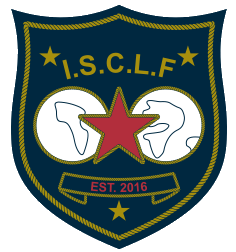Powering Up
By Mark Reynolds
When the wind is light and the water choppy, invariably you are looking for power. The number one question is usually "How to keep the crew over the side?". Other than sailing with a super light crew here are a few tips for getting the crew over early and powering up for these conditions:
Crew Weight: Being able to get the crew over the side is fast in choppy conditions because of the reduced windage and lower center of gravity. You also don’t want the boat too flat where you slam into the chop either. As the skipper I will sit almost inside the cockpit to keep my crew over the side in this condition. It even gets hard to see the tell tails sometimes! If it is flat water I don’t have the crew go over as early so I can sit out and see better.
Steering: You want to keep the boat moving so you must really concentrate on keeping both tell tails streaming aft on both sides, and not pinch. In light air it's more important than ever to have the crew doing the looking around so the helmsman can concentrate on precise steering. If you are going fast you are developing more power and you will end up pointing higher than the other boats.
Sails: You need to keep those sails powered up. Use your fuller main if you have one. Often a slightly older main will be better in conditions where you need more power. The draft will be further aft giving you a bit more helm and power.
Rig: It's important to have a straight or slightly sagged mast. You don't want the mast poked to weather at the spreader with the tip falling off in light wind. When the rig is set up properly you will automatically have the right bend in all conditions. If your mast is poked to weather in 8 knots you need to loosen the intermediates and the lowers. There should also be a little bit of looseness at the mast partner to keep the mast in column.
Outhaul: As soon as you are no longer full hiking you should ease the outhaul a bit. You can't ease it much but enough to get a bit of shape in the lower section of the sail. Use the lowest seam in the main, it should be pulled straight when over-powered but can drop away at the middle of the boom as much as an inch when you need some power.
Cunningham: The Cunningham should be eased to keep the draft as far back as possible. Leave plenty of wrinkles in. If the wind has dropped uncleat the Cunningham and ease the mainsheet real quick to get the mainsail to move up the mast track. Spraying a little McLube on the mast track and on the main luff rope will also help.
Backstays: It's very important to have no tension on the upper backstay. This will give the jib maximum sag and fullness. The lower backstay is a little trickier. You don't want to pull it on too soon, if the crew is not hiking you probably can't use the extra fullness but as soon as your crew drops over the side you can make the main fuller to develop more lift. This will help to keep them over the side and result in more height as well. The helm will increase but in this condition this is a good thing. You just have to experiment to see how much you can pull on. Watch the boats around you.
Jib Trim: Make sure you have just enough tension on the jib downhaul to pull out the wrinkles but no more. You might want to keep a few wrinkles in to make sure you are not too tight. Jib lead stays the same but the crew will need to trim the sheet a little more often as the wind changes keeping the leech on the mark on the spreader.
Mainsheet: More trim will give you more power. Just make sure you don't overdo it and put on the brakes. You just have to look at the boats around you and experiment with more or less mainsheet tension to see what's right for the conditions.
In summary if it’s light and choppy power up as much as you can and get the crew over the side. You need to sit in to get the right heal angle. If the water is flat then get comfortable and have the crew balance the heal angle.
.jpg)
Iain Murray sailing in light conditions, sitting almost inside the cockpit to keep the crew over the side.





